- Home
- Ramachandra Guha
Redeeming the Republic
Redeeming the Republic Read online
Ramachandra Guha
Redeeming the Republic
CONTENTS
~
Redeeming the Republic
Copyright Page
Redeeming the Republic
~
I
Let me begin with two epiphanies.
A few years ago, I visited a book fair held on the seafront in Kochi. The local publishers were represented, as were Indian and foreign firms. In between the stall of Oxford University Press and a shop stocking the works in Malayalam translation of Marx, Engels and Lenin, I came across a man selling, of all things, pickles from Bikaner. He had placed his wares in large open buckets, one containing aam ka murabba, another shalgam ka achar. I asked the young man how he had come from a northern desert to participate in a book fair in this southern port. ‘Maine suna ki Keral mein mela lag raha tha,’ he answered, ‘aur maine socha ki wahan ek dukan khol doon.’ (I heard that there was some kind of fair on in Kerala, so I thought, why don’t I bid for a stall there?) Thus spoke a pickle man in a salad-bowl nation, adding his charmingly naïve logic to an apparently illogical country.
Some months after this encounter, I was travelling by car from Patiala to Amritsar. It was a hot day, and the countryside was monotonous. I fell asleep, and woke when the car slowed down. We were now in the market town of Khanna. I scanned the buildings and their signs. One, particularly, caught my attention: it read, ‘Indian Bank, Khanna Branch, Head Office, Rajaji Salai, Chennai’. I was charmed and uplifted, sentiments that (especially for the young) perhaps need explaining. For, ‘Rajaji’ was C. Rajagopalachari, the scholar–statesman who had been governor-general of India, chief minister of Madras State, founder of the free-market Swatantra Party, and author of bestselling versions of the Ramayana and Mahabharata. In his person he embodied all Punjabi stereotypes about the Madrasi; he was slight, wore thick glasses, had never played a single sport or consumed an alcoholic beverage, and was vegetarian. Yet here was evidence of his enduring legacy in the Punjab, where—as that sign informed me—there were many whisky-guzzling, chicken-eating Sikh farmers banking their savings in an institution headquartered in Chennai on a road named after a dhoti-wearing, rasam-drinking, austere Tamil scholar.
The writer Wallace Stegner once remarked that ‘the tracing of ideas is a guessing game. We can’t tell who first had an idea—we can only tell who first had it influentially, who formulated it in some form, poem or equation or picture, that others could stumble upon with the shock of recognition.’ So it is with ‘the idea of India’. Rabindranath Tagore used the phrase in a letter to a friend in 1921, writing that ‘the idea of India is against the intense consciousness of the separateness of one’s own people from others, which inevitably leads to ceaseless conflicts’. There may have been others who used the phrase before him. But it was only in 1997, when Sunil Khilnani used it as the title of his wonderful book, that his fellow citizens stumbled with a shock of recognition at what the idea of India represented.
As citizens, we ubiquitously use a humdrum manifestation of the miracle of India—namely, our currency notes, which have a portrait of Gandhi on one side and the national Parliament on the other, and its denomination written in seventeen languages, indeed seventeen different scripts, each encoding a distinct, sophisticated, ancient and proud literary culture. Since rupee notes are an artefact of everyday life, we do not see or sense their significance. However, in its own way our paper currency is as marvellous and strange as the Bikaneri achar-vendor in Kochi or the signboard of the southern bank in the Punjab.
II
The plural, inclusive, idea of India has three enemies. The best known is the notion of a Hindu Rashtra, as represented in an erratic fashion by the Bharatiya Janata Party (BJP) and in a more resolute (not to say more bigoted) manner by the Rashtriya Swayamsevak Sangh, the Vishwa Hindu Parishad, the Bajrang Dal, and other associated organizations. When Khilnani published his book in 1997, Hindutva appeared to be the major challenge to the idea of India. To the ‘theoretically untidy, improvising, pluralist approach’ of Gandhi and Nehru, he wrote, the Sangh Parivar offered the alternative of ‘a culturally and ethnically cleaned-up homogeneous community with a singular Indian citizenship, defended by a state that had both God and nuclear warheads on its side’.
Living in north India between 1988 and 1994, I experienced this challenge at first- and second hand—by seeing my Muslim friends board trains under assumed Hindu names, by visiting Bhagalpur after the riots provoked by Lal Krishna Advani’s rath yatra, by witnessing a more general polarizing of public opinion on religious lines. The poisonous residues of those years carried on well into the next decade, as illustrated by the pogrom against Muslims in Gujarat in 2002.
Shortly after the Gujarat riots, I was driving to the Mumbai airport from the south of the city, when I noticed the tricolour hanging out of every home on Muhammad Ali Road. As I proceeded northwards, beyond Parel into Dadar and Shivaji Park, the flags were not visible any more. The contrast puzzled me, till I reached the airport and saw a live telecast of an India-Pakistan cricket match. It remains one of the saddest memories of my life—the memory of how, intimidated by decades of harassment and violence at the hands of Hindutva bigots, so many of my fellow citizens had to shame themselves into a public display of patriotism solely on account of their faith.
One reason that Hindutva has been so successful is that it speaks in different voices. Arun Jaitley can be trotted out to calm the liberals; Narendra Modi to appeal to the hardliners. The BJP can distance itself from the RSS when it suits, but at other times can claim to be tied by an umbilical cord to it. The RSS in turn can opportunistically own or disown the trishul-waving goondas of the Vishwa Hindu Parishad and the Bajrang Dal.
Back in 1968, the scholar–statesman C. Rajagopalachari observed that the Jana Sangh (the predecessor of today’s BJP) was a party which ‘has quite a few good leaders’. Then he added: ‘What is needed however is a broadmindedness that not just practises toleration but looks upon Mussalmans, Christians, Parsis and others as politically and culturally as good as Hindus.’ Four decades later, Indians still wait for that broadening of Hindutva minds. Perhaps the wait has been in vain. For, in its origins and core beliefs, the Sangh Parivar is motivated by values and ideals that are antithetical to those of a modern, secular, liberal democracy.
Some commentators use the term ‘Hindu nationalists’ to characterize the members and leaders of the Sangh Parivar. It is a label that we must reject. How can they be called ‘nationalists’ when they would withhold full citizenship from those Indians who are Muslims or Christians or Parsis or atheists? One major Hindutva ideologue, Ashok Singhal, has long argued that India should emulate Pakistan by denying top jobs to the minorities and by making them vote in separate electorates. The Hinduvta cadres take this kind of thinking to the streets, as in their notorious slogan, shouted during communal riots, of ‘Pakistan ya Kabristan’ (go to Pakistan, or we will be off with your heads).
The Kannada writer U.R. Anantha Murthy adds an interesting caveat to this argument. He says that we should not call the Sangh Parivar the ‘saffron brigade’ either. For, saffron is a beautiful colour, the colour of wisdom and renunciation, with so many rich resonances in our myths and our history. Why should we then cede it to the hard, humourless men on the right? Let them not usurp the lovely colour ‘saffron’ nor, indeed, the inclusive term ‘nationalist’. The correct characterization of the ideology of the Sangh Parivar, therefore, is ‘Hindu chauvinist’.
To be fair, there are also other kinds of religious fundamentalisms lurking around in India. Some Christian and Muslim groups in India are as convinced of their theological superiority, as sure of their victory at the altar of history, a
s any bigot of the Sangh Parivar. The hold of the Muslim orthodoxy over the community is so strong that even liberal Muslim intellectuals are cowed down by them. As a Hindu, I do not need to refer to any religious text to attack Untouchability—I can merely point out that it is an inhuman practice impermissible in a civilized society. Regardless of what the Shastras might or might not say on the subject, the fact that the Indian Constitution abolishes Untouchability is good enough for me. But a Muslim asking for equal rights for women finds it far more difficult to argue from first principles. He takes refuge instead in one or other verse from the Koran, read or interpreted in a way most congenial to his argument. He tends to suppress or ignore the contrary evidence in other verses or sections.
There is, indeed, a reassertion of religious orthodoxy in all faiths in modern India—among Muslims and Christians as well as Sikhs and Hindus (and even, as it happens, among Jains). It is the illiberal tendencies in all these religions that, at the present juncture, are in the ascendant. The mullahs who abuse Sania Mirza or Taslima Nasreen, and the Sikh hardliners who terrorize the Dera Sacha Sauda, are also wholly opposed to the spirit of the Indian Constitution. But simply by virtue of numbers—Hindus are, after all, more than 80 per cent of India’s population—and their much wider political influence, Hindu bigotry is indisputably the most dangerous of them all.
III
The threat to India from Hindutva bigotry was at its most intense from about 1989 to about 2004. When judged by political (and social) influence the threat appears to have receded, although the terrorist activities, recently exposed, of sundry sadhvis and swamis suggest that one should not be too sanguine on this score. At any rate, right-wing religious fundamentalism has now been matched in force and influence by a challenge to the idea of India from the extreme left—that posed by the Communist Party of India (Maoist). Anthropologists such as Nandini Sundar have documented in detail how the rise of the Maoists is linked to the dispossession of the tribals of central and eastern India. These tribals live in India’s densest forests, along its fastest-flowing rivers, and atop its richest veins of iron ore and bauxite. As the country has industrialized, they have lost their homes and livelihoods to logging projects, dams, and mines which are directed by and benefit more powerful social forces.
Even when they are not dispossessed, the tribals are actively discriminated against. Demographically concentrated in a few hill and forest districts, they do not constitute a vote bank whose voice can, at least symbolically, be attended to by the political class. There is a contrast here with Dalits (as well as Muslims), who are more evenly distributed across India, and hence have a far greater impact on the outcome of state and national elections. Lacking adequate representation in the higher civil service, and without a political voice anyway, the tribals are subject to contempt and condescension by the officials of the forest, police, revenue, education and health departments, who are obliged by law to serve the adivasis but oriented in practice to harass and exploit them.
In the summer of 2006 I travelled through the district of Dantewada in Chhattisgarh state, as part of a group of independent citizens studying the tragic fallout of Salwa Judum, a vigilante army promoted by the state government. We found that the Judum had polarized adivasi society, fuelled very many murders and killings, and displaced tens of thousands of people from their homes.
In the most peaceful of times the state has often failed to uphold the law in tribal areas. Schedules V and VI of the Constitution provide for a substantial degree of self-governance in districts where adivasis are in a majority. Yet their clauses protecting tribal rights in land and forests, curbing the activities of moneylenders, and mandating the formation of village and district councils have been honoured only in the breach. These schedules provide for local councils to share in the royalties from minerals found on tribal land; what happens in practice is that the adivasis do not get to see or spend a paisa from mining, whose proceeds are shared between the contractors and the state-level (and usually non-tribal) politicians. Meanwhile, the criminal justice system is in a state of near collapse; as witnessed in the murder of Shankar Guha Niyogi, that selfless striver for the rights of adivasi workers in Chhattisgarh. It was widely believed that Guha Niyogi was killed by assassins hired by capitalists; yet those who planned and executed the murder have gone scot-free.
Even with this kind of record, Salwa Judum marked a new low. Bands of vigilantes roamed the Bastar countryside accompanied by the police and paramilitary, in search of Naxalite sympathizers, alleged or real. They attacked dozens of villages and burnt hundreds of homes. They killed many innocent people and terrorized many others. The Supreme Court of India has many first-hand testimonies of villagers who have suffered at the hand of these state-supported vigilantes. The residents of Pakela village, for example, recorded that twenty of their homes had been burnt by Salwa Judum cadres. ‘Everything in the homes,’ reads the English translation of their evidence, ‘rice, clothes, utensils and money—got reduced to ashes.’ Other villagers offered more precise accounts of the damage, listing the number of paddy sacks or hens or pigs seized or burnt from individual households. The collective sentiments of those targeted by Salwa Judum were expressed most poignantly by the residents of Korcholi village. They said:
The frightened villagers of Gangaloor, Cherpal and Bijapur, seeing the Salwa Judum, have fled into [the] forests. The Salwa Judum burns the food stock, houses and clothes. They also break the cooking utensils. Raping women, slitting people’s throat to kill, killing people by drowning them in water, robbing them, etc. are the main activities of the Salwa Judum leaders. Why is this happening in our country, why is this happening in Chhattisgarh? Why has the Chhattisgarh administration been running this? Has our Chief Minister been elected only for this?
When I visited Dantewada, I found that an atmosphere of fear and insecurity pervaded the district. Families and villages were divided, some living with, or in fear of, the Maoists, others in fear of, or in roadside camps controlled by, the Salwa Judum. As many as fifty thousand people were displaced from their homes. These tribal refugees lived in a pitiable condition, in tents exposed to the elements, and with no access to health care or gainful employment. Thousands of others fled across the border into Andhra Pradesh.
Ironically, by arming civilians, the state had merely reproduced the methods of the other side. For, tribal boys in their teens joined Salwa Judum for much the same reason as other boys had previously joined the Naxalites. Educated just enough to harbour a certain disenchantment with labouring in field and forest, but not enough to be absorbed with honour in the modern economy, these boys were enticed by the state into a job which paid them a salary (albeit a meagre one—Rs 1500 a month), and gave them a certain status in society. Gun in hand, they strutted around the countryside, forcing those without weapons to fall in line.
In this manner, the machismo of revolution was being answered by the machismo of counter-revolution. Whether sangam organizer or special police officer (SPO), the young men of Dandakaranya had been seduced by their new-found—and essentially unearned—authority. In the Dantewada district alone, there were several thousand young males punch-drunk with the power which, as Mao said, flows from the barrel of a gun.
In 2007, two Public Interest Litigations were filed in the Supreme Court of India, asking for the disbandment of Salwa Judum. One of the petitioners was Nandini Sundar, who in 1997 published a landmark social history of the region, and has since regularly returned to do fieldwork there. After many hearings spread over several years, the court issued an order in July 2011, calling for the disbandment of Salwa Judum and the filing of cases against those guilty of arson, murder and rape. Justice B. Sudershan Reddy and Justice Surinder Singh Nijjar observed that the Chhattisgarh government appointed thousands of ‘barely literate tribal youth as SPOs’, and then asked them ‘to undertake tasks that only members of the official and formal police ought to be undertaking’.
The creation of Salwa Judum, the apex cour
t pointed out, resulted in ‘a miasmic environment of dehumanization of youngsters of the deprived sections of the population, in which guns are given to them rather than books, to stand as guards, for the rapine, plunder and loot in our forests’. By arming poor and largely illiterate adivasis, the Chhattisgarh government had installed ‘a regime of gross violation of human rights in a manner, and by adopting the same modes, as [have] done Maoist/Naxalite extremists’.
The Supreme Court held that the creation of special police officers violated ‘the promise of equality before the law’ assured by Article 14 of the Constitution. It treated unequals as equals, asking untrained adivasis to conduct tasks meant for trained policemen. It also violated ‘the dignity of life’ promised by Article 21, since these adivasi young men were wilfully exposed to the risk of death.
The court also expressed its disappointment with the cavalier response of the government to questions and queries. Thus the state and central governments repeatedly insisted ‘that the only option for the state was to rule with an iron fist, [and] establish a social order in which every person is to be treated as suspect … and a Maoist’. The judges were ‘aghast at the blindness to constitutional limitations of the state of Chhattisgarh, and some of its advocates, in claiming that anyone who questions the inhumanity that is rampant in many parts of that state ought necessarily to be treated as Maoists, or their sympathizers, and yet in the same breath also claim that it needs the … sanction, under our Constitution, to perpetrate its policies of ruthless violence’.
The Supreme Court remarked that ‘lawless violence, in response to violence by the Maoist/Naxalite insurgency, has not, and will not, solve the problems, and instead it will only perpetuate the cycles of more violen[ce]’. The state of affairs in Chhattisgarh reminded the judges of the state of nineteenth-century Africa, as described in Joseph Conrad’s novel, Heart of Darkness. Thus, said the judges, the actions of both the state and the Naxalites manifest ‘the darkness, represented by inhumanity and evil, to which individual human beings are capable of descending, when supreme and unaccounted force is vested, rationalized by a warped world-view that parades itself as pragmatic and inevitable’.

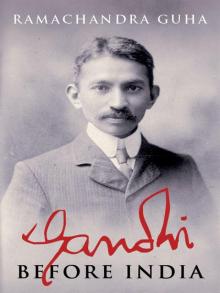 Gandhi Before India
Gandhi Before India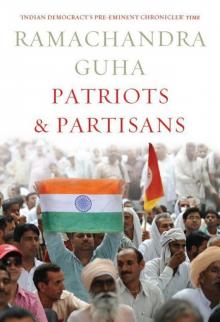 Patriots & Partisans
Patriots & Partisans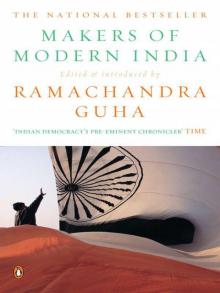 Makers of Modern India
Makers of Modern India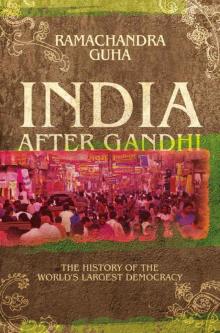 India After Gandhi: The History of the World's Largest Democracy
India After Gandhi: The History of the World's Largest Democracy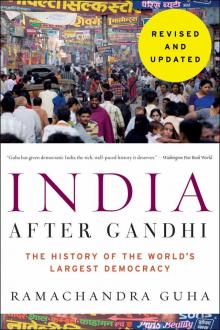 India After Gandhi Revised and Updated Edition
India After Gandhi Revised and Updated Edition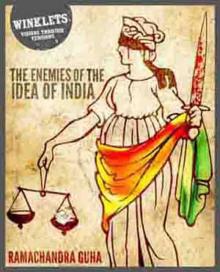 The Enemies of the Idea of India
The Enemies of the Idea of India Verdicts on Nehru
Verdicts on Nehru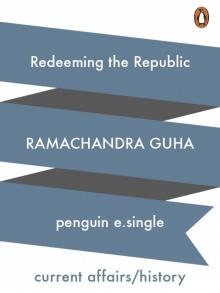 Redeeming the Republic
Redeeming the Republic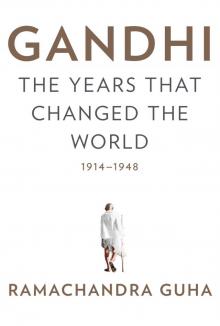 Gandhi
Gandhi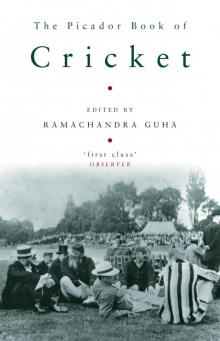 The Picador Book of Cricket
The Picador Book of Cricket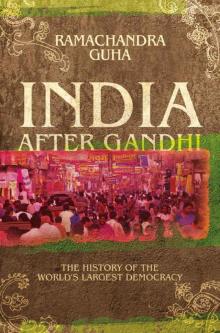 India After Gandhi
India After Gandhi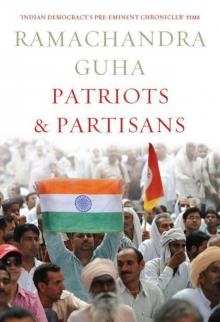 Patriots and Partisans: From Nehru to Hindutva and Beyond
Patriots and Partisans: From Nehru to Hindutva and Beyond